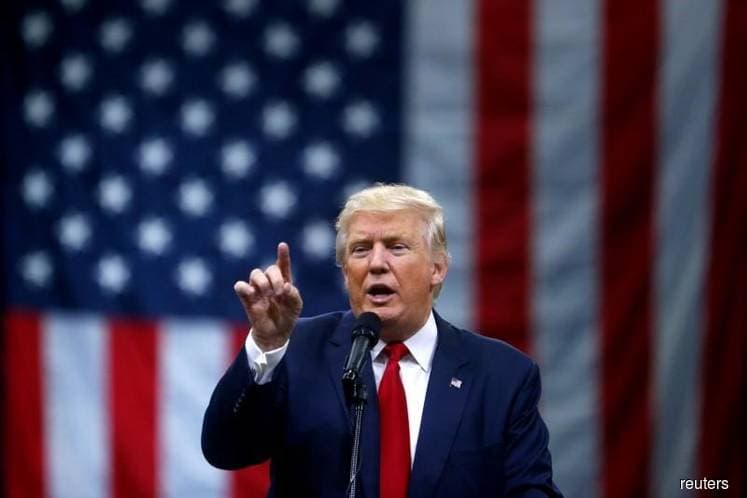
(Aug 26): The future of U.S. interest rates, pressure from President Donald Trump, and the economic impact of superstar firms like Amazon.com Inc. were among the topics that enjoyed fierce debate at this year’s gathering of central bankers in Jackson Hole, Wyoming.
Here’s a rundown of what was learned at the Kansas City Fed’s annual symposium in the shadow of the Grand Teton mountain:
Fed on Track for September
Fed Chairman Jerome Powell cemented expectations for another rate hike in September and kept the chances for another shift in December firmly above 60 percent.
Speaking on Friday, he said there was “good reason” to expect the U.S. economy to sustain its recent strength and that the “gradual process of normalization remains appropriate.”
In interviews with Bloomberg Television, Kansas City Fed President Esther George and Robert Kaplan, president of the Dallas Fed, backed two more rate increases in 2018. Bloomberg Economics still contends that tighter financial conditions will push the December shift into 2019.
Charting Gradual Approach
Highlighting the perils of a policy error by doing too much or too little, Powell noted that inflation is around Fed’s 2 percent goal but not showing signs of accelerating. So, he said, “there does not seem to be an elevated risk of overheating.”
That endorsed the Federal Open Market Committee’s approach of moving “the stance of policy gradually closer to the FOMC’s rough assessment of neutral as the expansion has continued,” Powell said.
The Atlanta Fed’s Raphael Bostic, an FOMC voter this year, said that taking a pause when the Fed reaches the rate that neither stimulates or slow the economy “ makes a lot of sense.”
As for the slowdown concerns of the bond market, as evidenced by the flattening of the yield curve, James Bullard, president of the St. Louis Fed, said he would take such signals “ seriously,” while adding that there’s no reason to challenge them now. Cleveland Fed President Loretta Mester, another 2018 voter, said the indicator is “different than it has been in the past.”
Powell Doctrine
Powell, who took the reins at the Fed in February from Janet Yellen, also spelled out an approach to risk management that will weigh evidence on the economy’s performance rather than overly rely on what academic models say is needed.
He noted that “our best assessments” of what the economy has been doing have changed significantly, and that models provide at best a “hazy” aide to navigating policy.
Low unemployment, for example, should have ignited inflation and wage pressures by now, according to the theory, yet hasn’t in reality. Powell also praised former Fed chief Alan Greenspan for correctly spotting the productivity benefits of new technology in the 1990s and so holding back on rate hikes.
Still, a Fed paper just last week warned that although there’s uncertainty when unemployment triggers inflation, it’s still better to set rates based on such gauges than to await inflation.
Powell’s strategy was praised by John Taylor, the Stanford professor he beat to the top Fed job and who once urged faster Fed hikes.
“Now that the movement is under way, policy is about what I would think is right,” Taylor said. “Plus, it’s surrounded with a lot of description about what they’re doing. He laid out the issues clearly and I think what’s important is a transparent, predictable process.”
What to do About Trump
Fed officials tried hard to ignore Trump’s recent criticism of their rate hikes and pledged to maintain the course they think is best for the economy, even if it means more pressure from the White house.
“The job of a central bank and my job is to make decisions on monetary policy without regard to political considerations or political influence,” said the Dallas Fed’s Kaplan. “I’m very confident we’ll do that.”
Kansas City’s George said policy makers are “very focused on the mandate given to us by Congress to try to make decisions that are in the long-run interest of a growing economy.”
Several of those at Jackson Hole did express concern with Trump’s trade war, though.
‘Amazon Effect’
This year’s conference focused on the market power in the U.S. and other developed economies of “superstar firms,” like Amazon, Apple Inc., and Alphabet Inc.’s Google.
Several economists were skeptical that there’s enough evidence so far to conclude that concentration has meaningfully eroded competition. Still, some of most well-respected attendees warned there’s plenty of reason for concern.
“The question is will these superstars pass on their benefits to consumers,” said Raghuram Rajan, the former governor of the Reserve Bank of India. So far, he added, many appear to be doing so, “but how long will this last?”
Princeton economist Alan Krueger concluded that concentration is lowering employment options for workers and increasing the frequency of collusion between employers to fix wages.
There was more agreement on one angle: while antitrust authorities and other regulators might be called on to respond, so far it doesn’t require any policy reaction from central bankers.
Rest of the World
Delegates reported little alarm that recent turmoil in Turkey and Argentina could spark an emerging market crisis, with Rajan saying he had yet to spot a “ systemic issue.”
Stronger developing economies like Columbia, Chile or Peru have no reason to fear Fed rate hikes, while the nations currently being hit by investors suffer “domestic weaknesses,” said Jose De Gregorio, former governor of Chilean central bank.
Bank of Canada Governor Stephen Poloz indicated he’ll also be raising rates gradually, saying he’s not worried about a recent inflation spike and also arguing that digital technologies may be boosting productivity.
Meanwhile, New Zealand’s central bank hasn’t ruled out cutting interest rates if needed to achieve its inflation target, Governor Adrian Orr said.